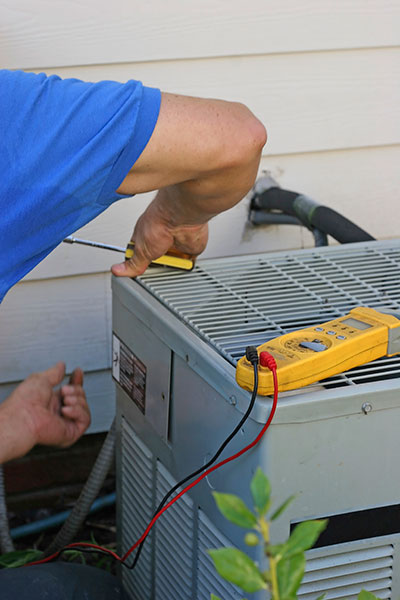All about Air Duct Cleaning and Sanitizing
11/22/2015 Back To BlogIn most homes, basic air quality testing will reveal a considerable number of contaminants, the most common ones being dust and pollen. Often, mold spores are present as well. If there are house pets, pet dander will most certainly be discovered as well. At this point, homeowners naturally ask themselves why this is the case when the floors, upholstery and all hard surfaces are properly cleaned on a regular basis. The problem has to do with contaminants stuck inside the air ducts of the HVAC system. Many particles are picked up and carried by the air flow.
This issue poses a need for timely home air duct cleaning. The next logical question to ask is whether sanitizing will be required as well. Find out more about the differences between the two methods and their results. This will help you make the best decision for your house.
Two Important Parts of HVAC Maintenance
 The cleaning process involves several steps. The first one is check-up of the ductwork. It shows what contaminants are present and where and how thick and buildup are. Then the actual cleaning can begin. The buildups of dust, dirt, pollen, pet dander and other particles are loosened up and then extracted. If mold is discovered, it will be removed with special products and UV cleansers designed to destroy the fungi and their pores. If the check has revealed air duct damage and/or leakages, the problems have to be resolved right away. Otherwise, contaminants will keep entering the system and the buildup rate will increase.
The cleaning process involves several steps. The first one is check-up of the ductwork. It shows what contaminants are present and where and how thick and buildup are. Then the actual cleaning can begin. The buildups of dust, dirt, pollen, pet dander and other particles are loosened up and then extracted. If mold is discovered, it will be removed with special products and UV cleansers designed to destroy the fungi and their pores. If the check has revealed air duct damage and/or leakages, the problems have to be resolved right away. Otherwise, contaminants will keep entering the system and the buildup rate will increase.
Air duct sanitizing is a completely different process. One really important thing that you need to know about it is that it is always done after the ducts have been thoroughly cleaned. If this condition is not met, the sanitizing will be ineffective. The process involves the application of a special type of product on the inner walls of the duct. This sanitizer is especially designed to be safe for the ductwork material and for people and pets as well. It has a set of valuable properties. It removes completely any accidentally remaining traces of microbial growth and more specifically mold growth. Its most important property is that it forms protective coating which helps to prevent future growth. It can also kill dust mites remaining inside after the cleaning.
Overall, it is best if both processes are included in regular air duct maintenance. This will give you the most effective and longest-lasting results. At the same time, the importance of repair must not be underestimated. If there are air leaks, they have to be properly sealed for achieving maximum energy efficiency and reducing the risk of future contamination further. Similarly, the root cause of the mold growth issue has to be eliminated.





